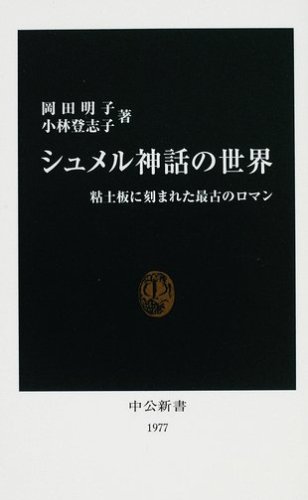8 0 0 0 OA グルコン酸クロルヘキシジン含有含漱剤により歯肉壊死をきたした1例
- 著者
- 深谷 千絵 矢郷 香 大塚 志穂 岡田 明子 中川 種昭 朝波 惣一郎
- 出版者
- Japanese Society of Oral and Maxillofacial Surgeons
- 雑誌
- 日本口腔外科学会雑誌 (ISSN:00215163)
- 巻号頁・発行日
- vol.50, no.10, pp.624-627, 2004-10-20 (Released:2011-04-22)
- 参考文献数
- 10
Concool F®is a chemical mouthwash containing chlorhexidine gluconate that is used for the treatment of periodontal disease and halitosis. We report a case of gingival necrosis caused by incorrect use of Concool F®A 52-year-old woman was referred to our hospital because of gingival necrosis. One week before presentation, she went to sleep after putting a cotton roll soaked in a large amount of Concool F®solution (0.36 % chlorhexidine gluconate) on the upper gingiva to reduce bad breath. She noticed bleeding and a painful ulcer in the upper gum from the maxillary right lateral incisor to the left second premolar.Whenever a mouthwash agent containing chlorhexidine gluconate is used, we must be cautious about its usage and dosage and instruct the patients on proper use.
1 0 0 0 OA 神殿建築から見たシュメール王権の成立
- 著者
- 岡田 明子
- 出版者
- 一般社団法人 日本オリエント学会
- 雑誌
- オリエント (ISSN:00305219)
- 巻号頁・発行日
- vol.12, no.1-2, pp.65-92,171, 1969 (Released:2010-03-12)
It was generally thought that the Sumerian kingship appeared in their society which had been equal, when the Sumerian cities became to need the powerful director with the intensification of the disputes between the cities. H. Frankfort, Th. Jacobsen, S. N. Kramer, and some others generally thought like this, and concluded that the Sumerian kingship established at the Early Dynastic II.But recently some scholars has begun to think earlier than the Early Dynastic II about the appearance of the kingship. They think that the centralization and the leading minority was rather suggested in the Sumerian great enterprises as the river improvements, the irrigation, and so on, though H. Frankfort thought them useful for strengthening the unity of the community.I consider the establishment of the Sumerian kingship from the development of the temple architecture.The Sumerian temple architecture deriving from the small shrines at Eridu developed into the gigantic temples of Uruk at the late Uruk period (c. 3000 B. C.). But after this period the precincts became more extensive and to be enclosed with the walls on the one hand, the temple architecture itself was inclined to be rather small, and to be built on a high terrace, that famous ziggurat, on the other hand. Almost all the great temples at the Early Dynastic period took this style, and this suggests the separation of the grades in the Sumerian society, that is to say the privileged class to be able to use the temple on the large terrace, and the mass to be able to approach only under the ziggurat. The former intervened between the mass and the great gods, and grasped the gods' will in their hands. The most powerful man of the privileged class became their king.And so the Sumerian kingship already appeared at the late Uruk period, that is earlier than the period when H. Frankfort and some others suggested.
1 0 0 0 OA 女子学生の化粧に対する意識と行動
- 著者
- 岡田 明子 芳住 邦雄
- 出版者
- 一般社団法人 日本繊維製品消費科学会
- 雑誌
- 繊維製品消費科学 (ISSN:00372072)
- 巻号頁・発行日
- vol.47, no.11, pp.652-660, 2006-11-25 (Released:2010-09-30)
- 参考文献数
- 33
- 被引用文献数
- 1
1 0 0 0 シュメル神話の世界 : 粘土板に刻まれた最古のロマン
- 著者
- 岡田明子 小林登志子著
- 出版者
- 中央公論新社
- 巻号頁・発行日
- 2008
- 著者
- 大塚 志穂 矢郷 香 大塚 友乃 岡田 明子 岡田 豊 中川 種昭 朝波 惣一郎
- 出版者
- 日本口腔内科学会
- 雑誌
- 日本口腔粘膜学会雑誌 (ISSN:13417983)
- 巻号頁・発行日
- vol.10, no.2, pp.30-35, 2004-12-30 (Released:2010-02-25)
- 参考文献数
- 24
- 被引用文献数
- 1 1
アンギオテンシン変換酵素 (以下ACE) 阻害剤は, まれに副作用として顔面, 口腔粘膜などの血管神経性浮腫を惹起する。呼吸困難を生じることもあり, 浮腫が咽頭部に及ぶと生命の危険性もある。今回われわれは, ACE阻害剤が原因として疑われた舌・口底部の血管神経性浮腫を経験したので報告する。患者は88歳, 女性で, 主訴は呼吸苦をともなう舌の腫脹であった。ACE阻害剤中止後, 1年4か月現在, 舌・口底部の浮腫の再発は認めていない。

